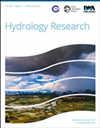溃坝洪水的比较分析与风险评价——以平水江水库为例
IF 2.4
4区 环境科学与生态学
Q2 Environmental Science
引用次数: 0
摘要
由于水库蓄水具有巨大的势能,溃坝洪水通常对下游的人员和结构具有灾难性的破坏性。本研究旨在以中国东南部的平水江水库为例,模拟和比较不同溃坝情景下的洪水及其对下游的影响。采用二维水动力学模型模拟了三种溃坝情景下洪水的下游演变,分析了溃坝洪水和下游淹没过程。主坝的逐渐失效导致附近城镇在约1小时内几乎完全淹没,从而有时间进行警告和疏散。主坝的瞬时失效导致更大的洪峰流量、更大的淹没深度和更快的淹没(20分钟),几乎没有时间进行警告/疏散。副坝的瞬时失效产生了低得多的峰值流量,尽管该镇在45分钟内仍大部分被淹没,但浅水深度和低流速有利于救援/疏散。研究结果表明,由于大坝尺寸和破坏模式的不同,洪水过程和淹没程度有显著变化,这为溃坝洪水风险评估和防灾规划提供了指导。本文章由计算机程序翻译,如有差异,请以英文原文为准。
Comparative analysis and risk assessment of dam-break floods: taking Pingshuijiang Reservoir as an example
Due to the huge potential energy associated with water storage in reservoirs, dam-break floods are often catastrophically destructive for people and structures downstream. This study aims to simulate and compare floods generated under various dam-break scenarios and their downstream impacts, taking Pingshuijiang Reservoir in southeastern China as an example. A two-dimensional hydrodynamic model is used to simulate the downstream evolution of floods under three dam-break scenarios, and the breach flood and downstream inundation process are analyzed. Gradual failure of the main dam leads to near-total inundation of the nearby town over c. 1 h, allowing time for warning and evacuation. Instantaneous failure of the main dam results in larger peak flow, greater submergence depth and faster inundation (20 min), leaving little time for warning/evacuation. Instantaneous failure of the auxiliary dam generates a much lower peak flow magnitude and, although the town is still largely submerged within 45 min, the shallow water depth and low velocity are conducive to rescue/evacuation. The results show significant variation in flood process and submergence due to dam size and failure mode that provide guidance for dam-break flood risk assessment and disaster avoidance planning.
求助全文
通过发布文献求助,成功后即可免费获取论文全文。
去求助
来源期刊

Hydrology Research
Environmental Science-Water Science and Technology
CiteScore
5.30
自引率
7.40%
发文量
70
审稿时长
17 weeks
期刊介绍:
Hydrology Research provides international coverage on all aspects of hydrology in its widest sense, and welcomes the submission of papers from across the subject. While emphasis is placed on studies of the hydrological cycle, the Journal also covers the physics and chemistry of water. Hydrology Research is intended to be a link between basic hydrological research and the practical application of scientific results within the broad field of water management.
 求助内容:
求助内容: 应助结果提醒方式:
应助结果提醒方式:


